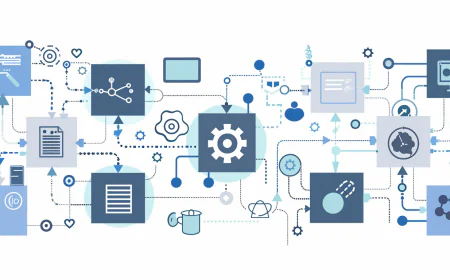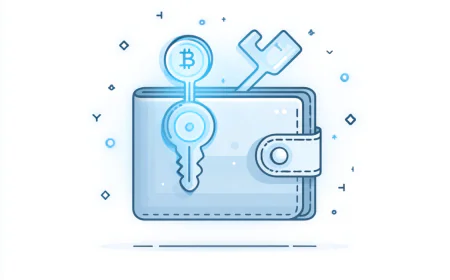Building RAG Pipelines: Step-by-Step Guide for Developers Using LangChain
Master building RAG pipelines with LangChain in 2025: Step-by-step tutorial, code examples, pro tips, tricks, and approximate pricing for developers creating smarter AI apps.

🚀 Building RAG Pipelines: Step-by-Step Guide for Developers Using LangChain
🧠 Why Build RAG Pipelines in 2025?
In 2025, Retrieval-Augmented Generation (RAG) pipelines are the go-to for making AI apps smarter and more reliable. By pulling real-time data into LLMs, they cut down on hallucinations and boost accuracy—perfect for devs building chatbots, search tools, or knowledge bases.
This guide walks you through creating a RAG pipeline with LangChain, the flexible open-source framework thats dominating AI workflows. Well cover steps, code, pro tips, and approximate costs to get you production-ready fast.
🔑 Core Components of a RAG Pipeline
Before diving in, understand the basics: RAG fetches relevant docs (retrieval) and feeds them to an LLM for generation. Key pieces include document loaders, text splitters, embeddings, vector stores, retrievers, and chains.
LangChain makes this modular—swap in tools like OpenAI for embeddings or Pinecone for storage. Pro Tip: Start local with FAISS to avoid costs, then scale to cloud for speed.
🛠️ Step-by-Step Guide: Building Your First RAG Pipeline
Follow these steps to build a basic Q&A app over web docs. Well use Python 3.12+ and LangChain v0.3 (latest in 2025). Assume you have an OpenAI API key for embeddings and LLM.
1. Setup and Install Dependencies`
Kick off by installing LangChain and integrations.
```bash
pip install --quiet --upgrade langchain langchain-community langchain-openai langgraph
```
Pro Tip: Use virtualenvs to isolate deps. For tracing, add LangSmith—its free for basics and catches bugs early.
2. Load and Split Documents
Load data from sources like web pages, PDFs, or databases.
```python
import bs4
from langchain_community.document_loaders import WebBaseLoader
from langchain_text_splitters import RecursiveCharacterTextSplitter
loader = WebBaseLoader(
web_paths=("https://lilianweng.github.io/posts/2023-06-23-agent/",),
bs_kwargs=dict(parse_only=bs4.SoupStrainer(class_=("post-content", "post-title", "post-header")))
)
docs = loader.load()
text_splitter = RecursiveCharacterTextSplitter(chunk_size=1000, chunk_overlap=200, add_start_index=True)
splits = text_splitter.split_documents(docs)
print(f"Split into {len(splits)} chunks.")
```
Trick: Adjust chunk_size based on your LLMs context window—smaller for precision, larger for efficiency.
3. Embed and Store in Vector Database
Convert chunks to vectors and store them.
```python
from langchain_openai import OpenAIEmbeddings
from langchain_community.vectorstores import FAISS Or use Pinecone for cloud
embeddings = OpenAIEmbeddings(model="text-embedding-3-large")
vectorstore = FAISS.from_documents(splits, embeddings)
```
Pro Tip: For large-scale, switch to Pinecone—its serverless and handles billions of vectors without infra headaches. Local FAISS is free but memory-bound.
4. Set Up Retriever and Generator
Retrieve docs and generate responses.
```python
from langchain_core.prompts import ChatPromptTemplate
from langchain_openai import ChatOpenAI
retriever = vectorstore.as_retriever(search_type="similarity", search_kwargs={"k": 3})
llm = ChatOpenAI(model="gpt-4o-mini")
prompt = ChatPromptTemplate.from_template(
"Answer based on context: {context}\n\nQuestion: {question}"
)
chain = {"context": retriever, "question": lambda x: x} | prompt | llm
```
Trick: Add re-ranking with Cohere or BM25 for better relevance—boosts accuracy by 20-30% on complex queries.
5. Run and Test the Pipeline
Invoke with a query.
```python
response = chain.invoke("What is Task Decomposition?")
print(response.content)
```
Pro Tip: Implement error handling for empty retrievals—fallback to pure LLM or refine queries automatically.
📊 Pricing Breakdown: Approximate Costs in 2025
LangChain is free, but integrations add up. Heres a table for common setups (based on usage; scale varies).
| Component | Provider/Example | Approx. Price (2025) | Notes |
|--------------------|------------------------|---------------------------------------|------------------------------------|
| Embeddings | OpenAI (text-embedding-3-large) | $0.00013/1K tokens | ~$0.01 for 100K docs embedding |
| LLM Generation| OpenAI (GPT-4o-mini) | $0.00015/1K input, $0.0006/1K output| Budget $0.10/query at scale |
| Vector Store | FAISS (Local) | Free | Great for dev/testing |
| Vector Store | Pinecone (Serverless) | $0.10/GB/month stored + query fees | Starter pod free up to 1M vectors |
| Tracing | LangSmith | Free tier; $39/month pro | Essential for debugging |
Trick: Optimize costs by batching embeddings and using open-source LLMs like Llama 3 via Ollama—cuts bills by 80%.
🧪 Real-World Example: Enhancing a Chatbot
Say youre building a support bot for your startups docs. Load PDFs instead of web:
```python
from langchain_community.document_loaders import PyPDFLoader
loader = PyPDFLoader("your_docs.pdf")
Proceed with splitting, embedding, etc.
```
Add multi-hop with LangGraph for advanced flows:
```python
from langgraph.graph import StateGraph
Define state, nodes for retrieve/generate, compile graph
```
Pro Tip: Monitor with LangSmith—track latency and tweak k in retrievers (e.g., k=5 for broader context).
For math in embeddings, recall cosine similarity:
$$
\text{similarity} = \frac{A \cdot B}{\|A\| \|B\|}
$$
Tweak thresholds to filter weak matches.
💡 Pro Tips and Tricks for RAG Mastery
- Avoid Pitfalls: Chunk overlap prevents info loss; test on benchmarks like HotPotQA.
- Scale Up: Go agentic with LangGraph for multi-step reasoning—handles 80% more complex tasks.
- Optimize: Hybrid search (vector + keyword) for precision; cache frequent queries to slash latency.
- Security: Sanitize inputs to prevent prompt injection; use private vector stores for sensitive data.
- 2025 Trend: Integrate multimodal (e.g., images via CLIP)—LangChain supports it natively.
✅ Conclusion: Level Up Your AI with LangChain RAG
Building RAG pipelines with LangChain is straightforward yet powerful, turning static LLMs into dynamic knowledge engines. In 2025, its key for devs to stay competitive—saving time on retraining while delivering accurate AI.
So what? Youll build apps that scale, reduce costs, and wow users with context-aware responses.
What's Your Reaction?
 Like
0
Like
0
 Dislike
0
Dislike
0
 Love
0
Love
0
 Funny
0
Funny
0
 Angry
0
Angry
0
 Sad
0
Sad
0
 Wow
0
Wow
0












































